At home with artist Theaster Gates
In our ongoing series, we go home, from home, with artists finding inspiration in isolation. This week, we reach American artist Theaster Gates at his home in Chicago to discuss new work for Gagosian’s Artist Spotlight series, and how, in recent times, he’s fallen back in love with making.
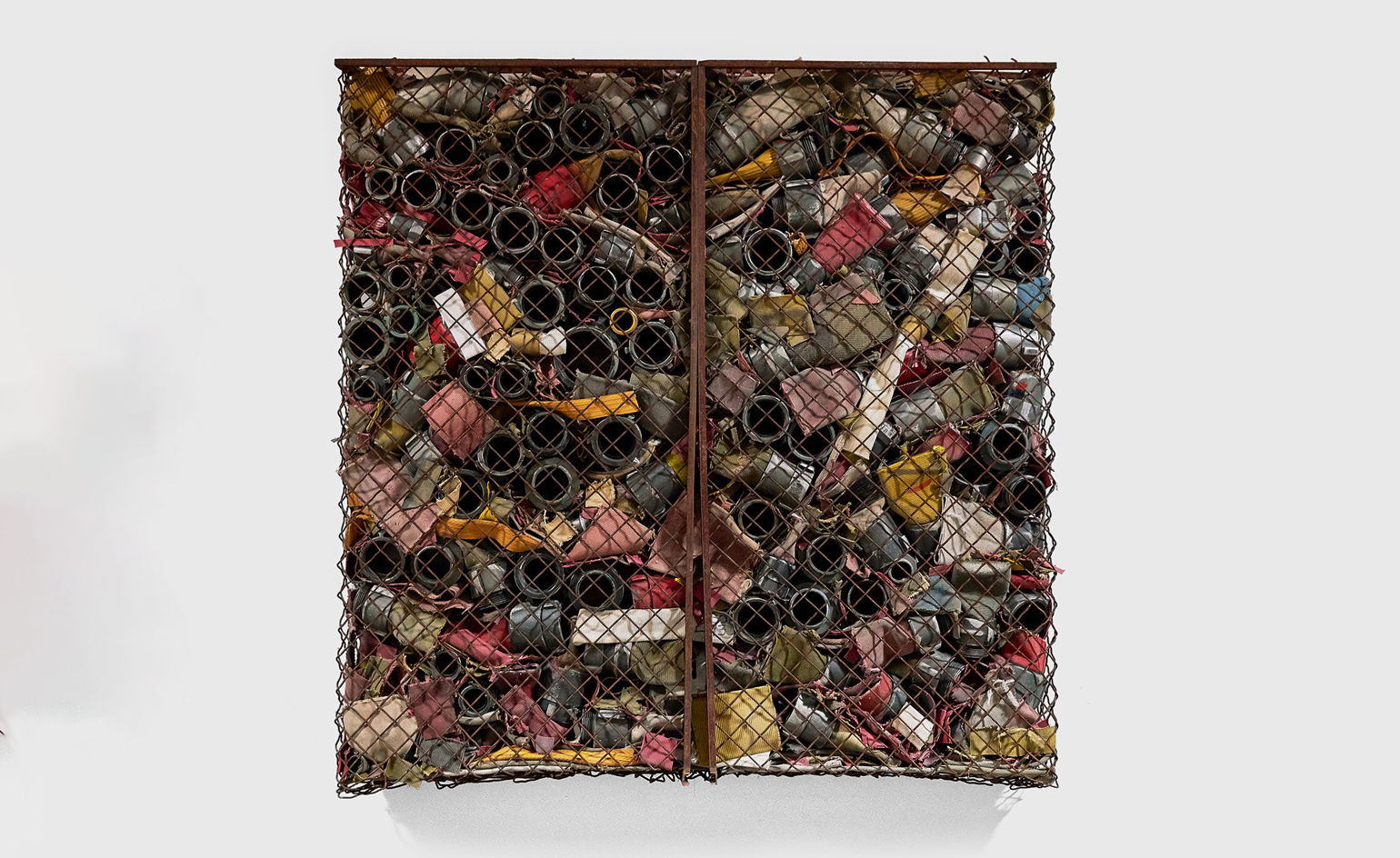
Bandleader, urban potter, neighbourhood reviver, archivist, university professor and art historian – these are just a few strings to the bow of the eclectic American artist Theaster Gates. Through his socially-engaged art, Gates explores race, territory, and the history of objects, interweaving these with African-American cultural histories and notions of Black space. He’s transformed derelict spaces into cultural hubs on Chicago’s South Side, offered banal objects room for reinterpretation and shone light on little-known or misunderstood historical narratives so we might better understand them. His wide-ranging output has included installation, discarded object assemblages, sculpture, painting, sonic exploration and ‘redemptive architecture’.
This week, as part of Gagosian’s online Artist Spotlight series, Gates is presenting new work in response to the Covid-19 pandemic, and in the process, offering a glimpse into his world as he prepares for his forthcoming exhibition, ‘Black Vessel’, at Gagosian New York this autumn.
We speak to Gates about unlikely sources of inspiration, paying attention to impulses, and the variety that keeps him alive. As he himself says, ‘we all have to do more.’
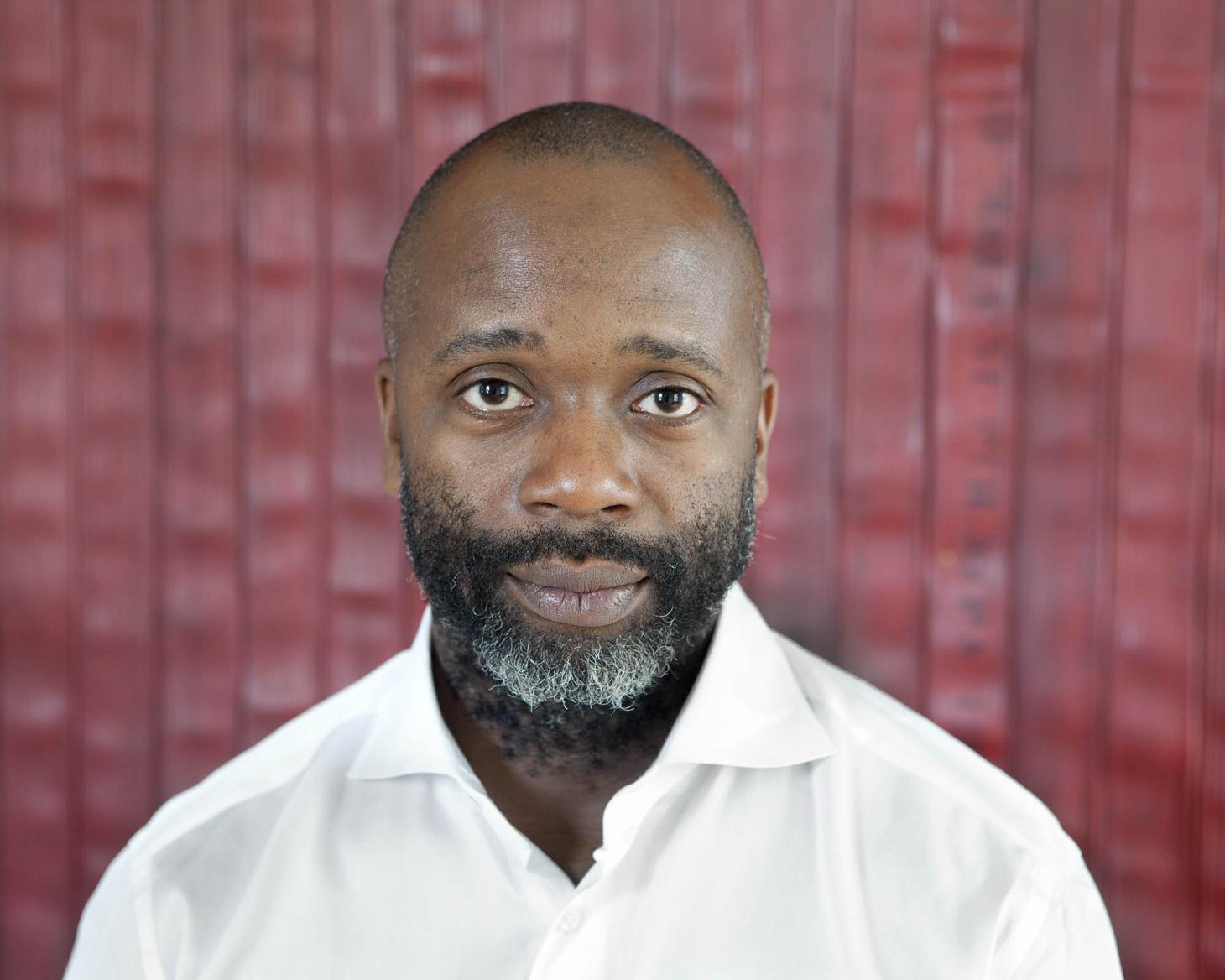
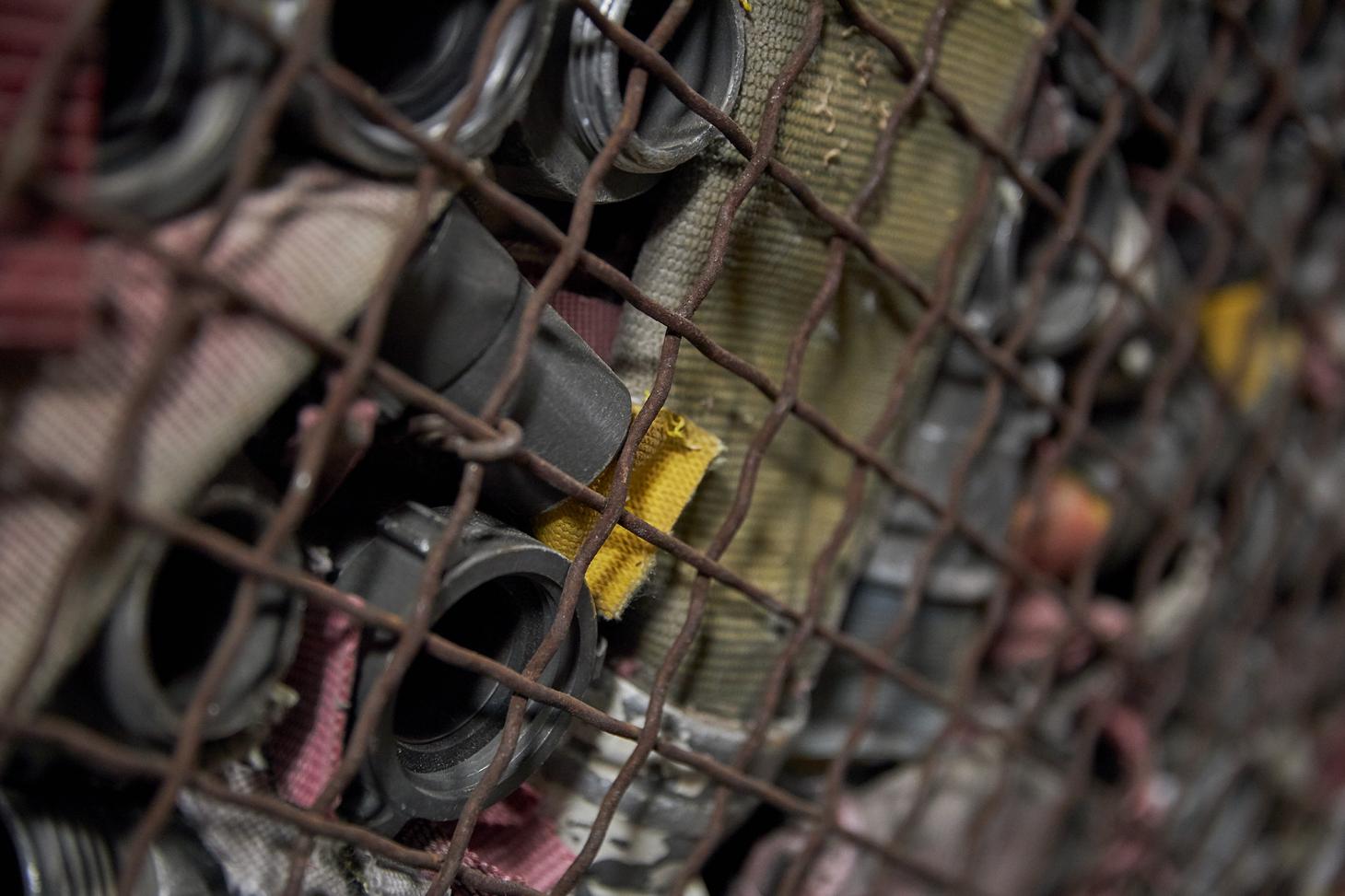
Top, Artist Theaster Gates photographed in front of a work from his Civil Tapestry series, which uses decommissioned fire houses from the South Side of his native Chicago to create abstract works that are charged with social history. Courtesy Gagosian. Bottom, A detail of Theaster Gates’ 2019 work, Consecration, made from steel and decommissioned fire hose. © Theaster Gates; Courtesy the artist and Gagosian
Wallpaper*: Where are you as we speak?
Theaster Gates: I’m currently sitting in my study at home. I have a really great sound system, my favourite turntable, and a collection of post-war contemporary art books that were given to me by a really wonderful couple named Susan and Lew Manilow. This is the space I come to when I get home – it’s a little bit like my man cave.
W*: Your multifaceted practice has involved everything from leading a band, giving new life to discarded objects, staging collective performances and even reviving a Chicago neighbourhood. Do you think it’s important to avoid categorisation in your work?
TG: I’m not preoccupied with avoiding categories. I know that there’s one train of thought, especially in the Western world, where you do one thing and you do it well. Maybe this train of thought is the most efficient, or seemingly the most lucrative, but I like to listen to myself and pay attention to the impulses I have. From those impulses, I feel compelled to mature my ideas. It’s almost like planting a bunch of different seeds and watching them grow. Whether I’m making music, paintings, or proposals for land use, I feel like it’s all coming from the same place, even though sometimes the projects seem vastly different. The variety keeps me alive and keeps me really excited.
W*: Your work often confronts assumptions about value and class, and issues around under-represented and under-resourced communities. In what ways can art be harnessed as a tool for social transformation?
TG: The practice tends to reflect the things around me, and when those things around me are beautiful and audacious, I’m happy to amplify them. When they are things that need critique and open reflection, I’m always asking myself how can I participate in that open conversation. Again, art isn’t a tool for transformation, but sometimes when the challenges of the everyday confront you, there’s an opportunity to use your will and energy against those challenges. Often the transformation is a by-product of just working hard to solve problems. We all have to do more.
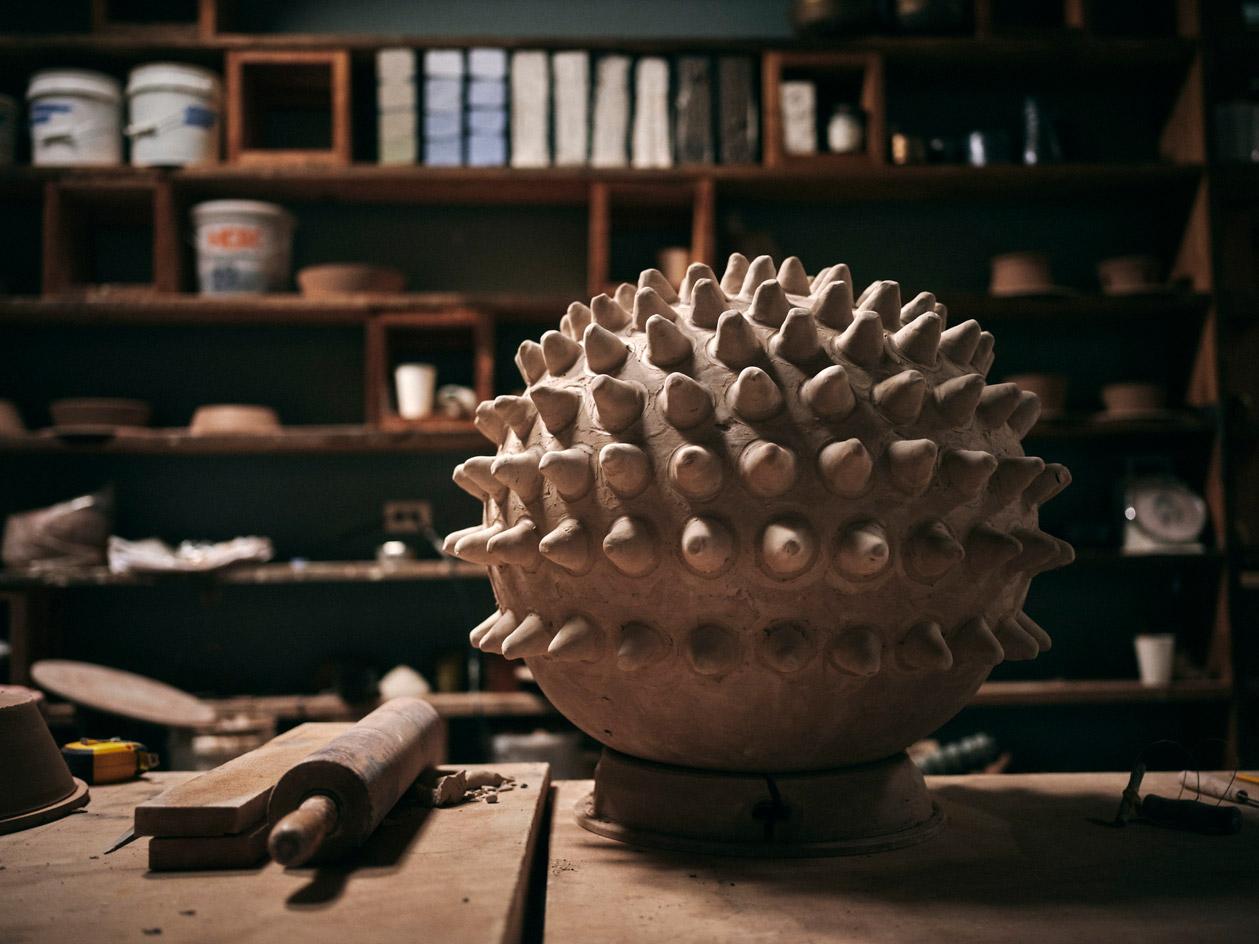
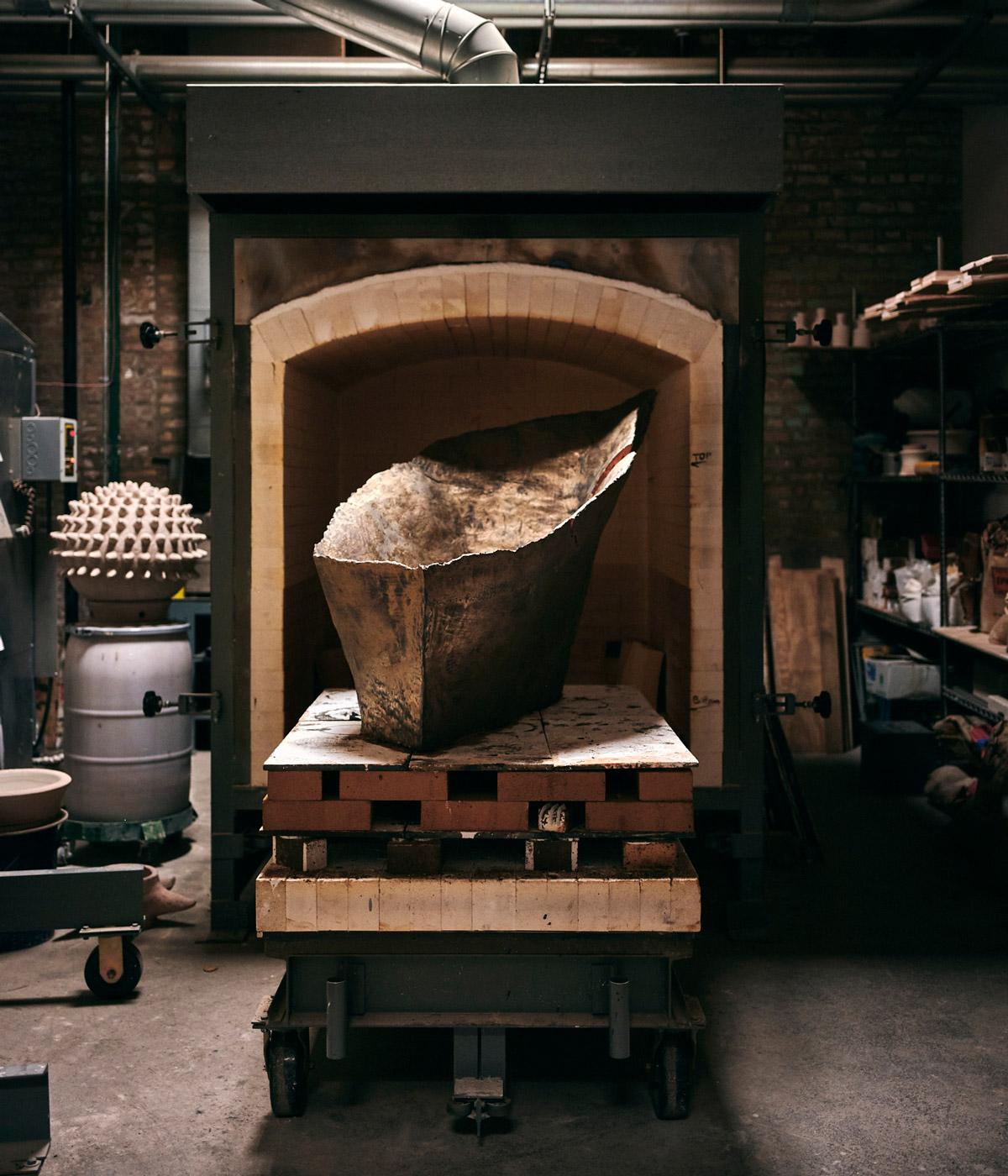
W*: Which artists, writers or musicians have had the greatest impact on you?
TG: The question of musicians, artists, and writers is so interesting because they’re probably unlikely suspects. In terms of musicians, I’ve spent a lot of time with René McLean. We were both in South Africa around the same time, and he invited me to be in his band while I was in Cape Town. He is the son of Jackie McLean, and they followed the legacy of Sonny Rollins and Ornette Coleman, wind instrumentalists who have played an important role in my life. I also think a lot about Terri Lyne Carrington, who is one of the most caring people I’ve ever met, and a really phenomenal drummer. I listen to Esperanza Spalding’s music all the time, and she continues to be a light in my life, as does the pop singer Corinne Bailey Rae. These are all living artists who are important to me. Then there are the greats: James Brown, John Cage, the house music performer Jamie Principle, and Sylvester.
On the art side, it’s slightly more complicated. When I first entered the art world, I was thinking about craft masters like Peter Voulkos and Shōji Hamada. Then my world grew to include Eva Hesse, Louise Bourgeois, Elizabeth Catlett, Lee Bontecou, Brancusi, Duchamp, and Martin Puryear. I’ve had the privilege of getting to know Kerry James Marshall, Chris Ofili, Lynette Yiadom-Boakye, and Njideka Akunyili Crosby, who are all really important living artists who continue to inspire me.
I really love Gertrude Stein and Gwendolyn Brooks’ earlier work. The period writing of Amiri Baraka and Lorraine Hansberry also really influenced me.
W*: What is the most challenging project you’ve worked on to date?
TG: My exhibition ‘Amalgam’ at the Palais de Tokyo felt like my most important feat, like a kind of complicated opera. It happened when the administration at Palais de Tokyo was shifting, but it remains one of my favourite projects. Thinking about the history of mixed-race people and allowing this island in Maine to be the stand-in for this work was really important.
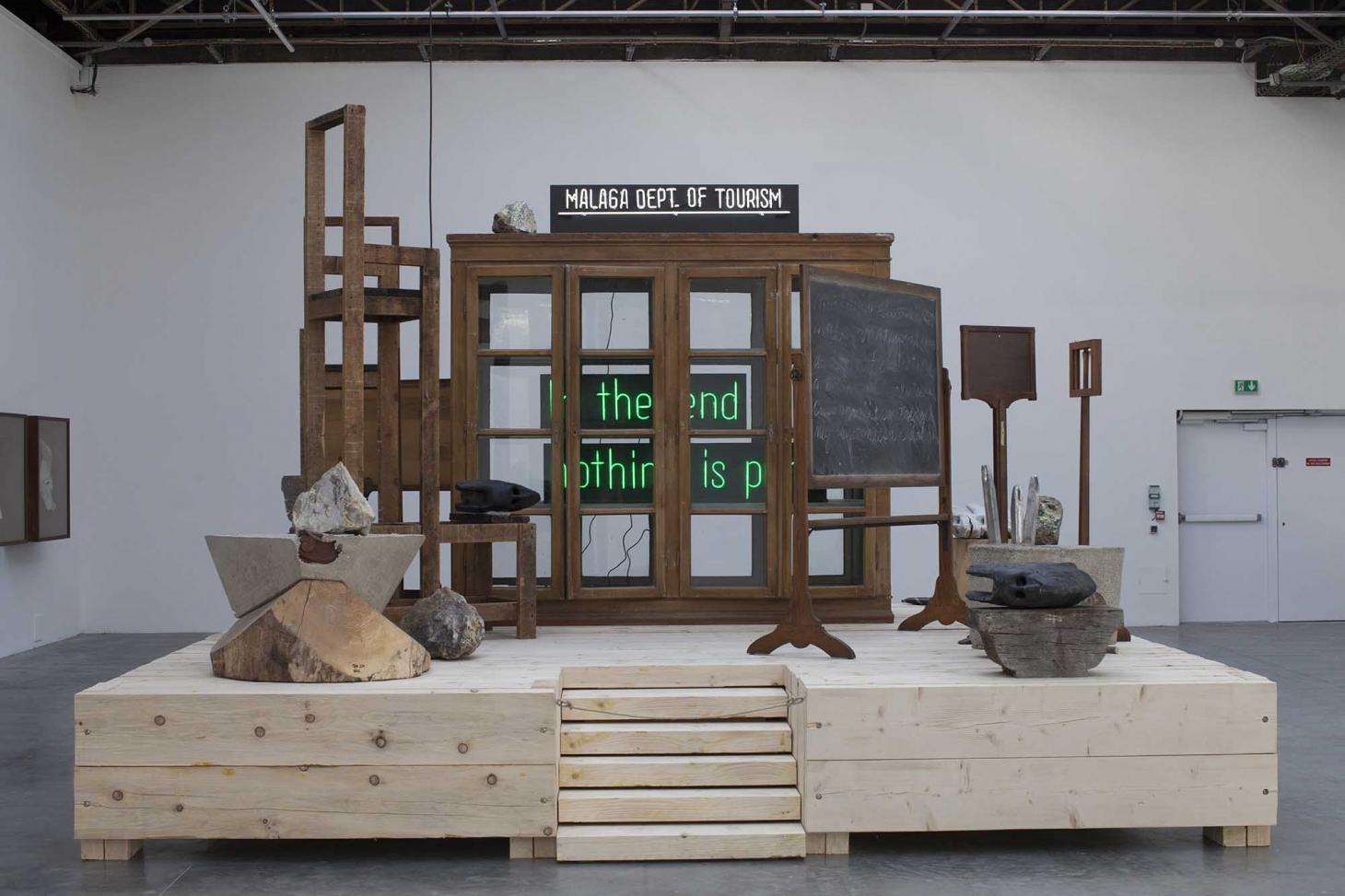
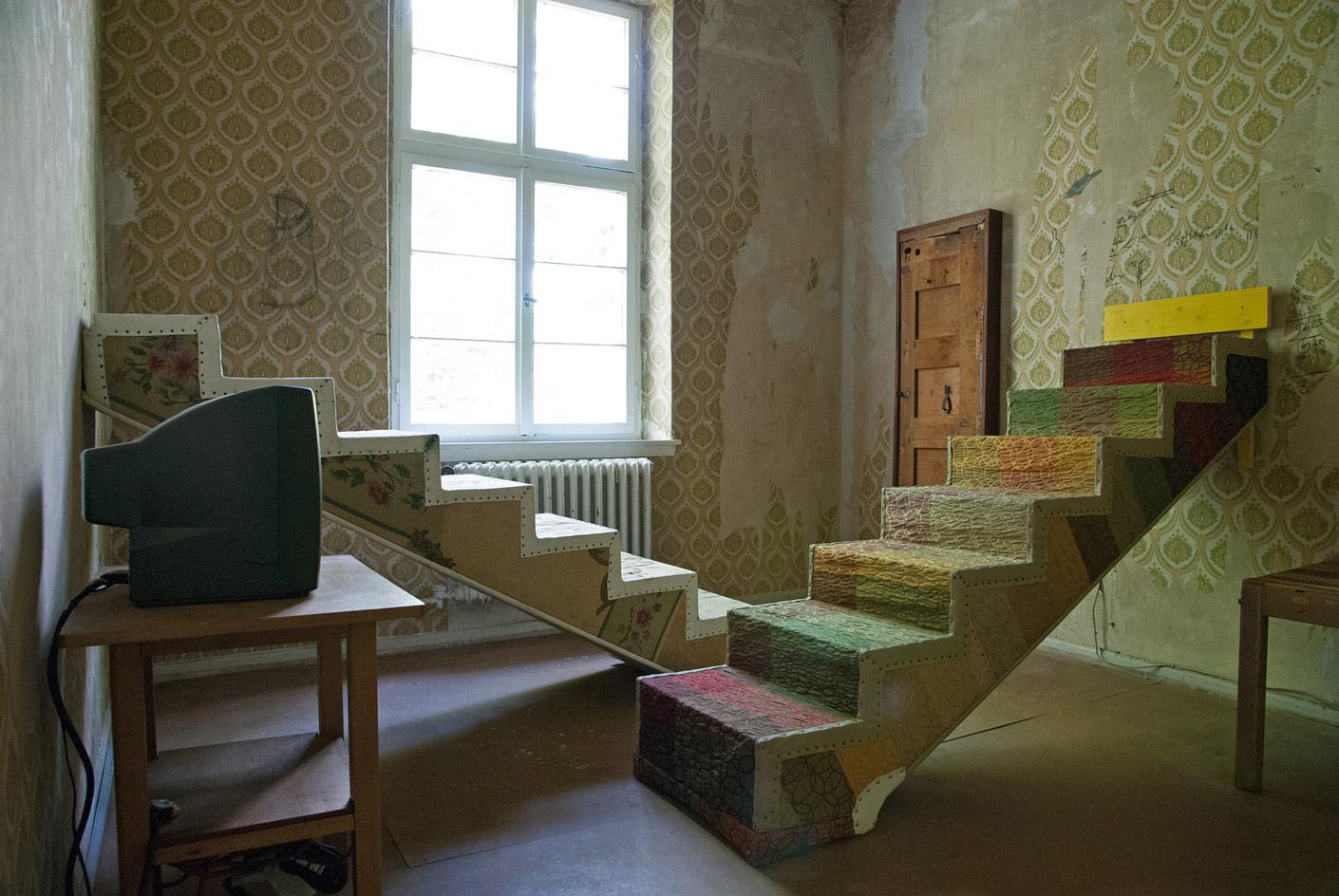
Top, Theaster Gates’ Island Modernity Institute and Department of Tourism, 2019. Created for his solo exhibition, ‘Amalgam’ at Palais de Tokyo, Paris, the installation comprises traditional African artefacts, made-up archival documents and obsolete mementos. It relates to Malaga Island in Maine, which had been home to a black and mixed race community that was forcibly evicted in 1911. © Theaster Gates; Courtesy the artist and Gagosian. Bottom, Installation view of Theaster Gates’ 12 Ballads for Huguenot House at Documenta 13, 2012. Taking over an abandoned hotel in Kassel, Germany, the artist imagined its restoration with labour and materials from an abandoned building on Chicago’s South Side. © Theaster Gates; Courtesy the artist and Gagosian
W*: Which career moment will you never forget?
TG: My participation in Documenta 13 [in 2012], where I did a project called 12 Ballads for Huguenot House with the curator Carolyn Christov-Bakargiev. It was definitely the first time that I had an international platform, and it felt like the entire art world and non-art world was in Kassel, Germany to see the show. I was so in my element. I had the opportunity to manage a team, perform, and meet people like Francis Alÿs and Francesco Bonami, which made me really happy. I feel like I grew a lot from that project, and it settled the anxiety I was developing around whether or not the work mattered in the world. Documenta 13 was one of the greatest experiences of my life.
Wallpaper* Newsletter
Receive our daily digest of inspiration, escapism and design stories from around the world direct to your inbox.
W*: Can you talk us through the work you’re presenting for Gagosian’s Artist Spotlight series?
TG: We wanted to try to let people into my world. The spaces that I inhabit, the process and the thinking that governs how I make art, and then glimpses at what studio life is like – from the clay studio to the kilns, to the varying shops. In a way, it feels like an opportunity for Gagosian to present my work, but also an opportunity for me to present myself to an American community that maybe knows more about my social life than my artistic practice. We tried to pack a lot into four or five minutes.
W*: Have recent circumstances changed the way in which you work?
TG: I would say that recent circumstances have changed the way I’m making, in that I actually have time to be present in my studio every day, and permission to withdraw and retreat. As a result of that, I feel like the ideas are maturing at a faster rate, and the quiet time is giving me the headspace I need to make better work.
W*: What’s the most interesting thing you’ve read, watched or listened to in the last month?
TG: In terms of things that I’m reading, I tend to be pretty broad. There’s André Malraux’s The Voices of Silence, an old school classic. I’m also reading a biography on Herbert Read, and digging into Donald Judd and the history of the Chinati Foundation. I also just got a monograph on Meleko Mokgosi. Nina Sun Eidsheim’s The Race of Sound: Listening, Timbre, and Vocality in African American Music is a really compelling read.
W*: During the period of social distancing, have you developed any new interests?
TG: I’ve fallen in love with making again.
Shot in recent weeks for Gagosian’s Artist Spotlight series, this video shows Theaster Gates in his Chicago studio, preparing for his upcoming New York exhibition ‘Black Vessel’. Artwork: © Theaster Gates. Video: Chris Strong. Video editing and postproduction: Parallax Postproduction
INFORMATION
‘Artist Spotlight: Theaster Gates’, 10-16 June 2020. gagosian.com
Gates’ exhibition ‘Black Vessel’ will take place at Gagosian New York this autumn. theastergates.com
Harriet Lloyd-Smith was the Arts Editor of Wallpaper*, responsible for the art pages across digital and print, including profiles, exhibition reviews, and contemporary art collaborations. She started at Wallpaper* in 2017 and has written for leading contemporary art publications, auction houses and arts charities, and lectured on review writing and art journalism. When she’s not writing about art, she’s making her own.
-
 Warp Records announces its first event in over a decade at the Barbican
Warp Records announces its first event in over a decade at the Barbican‘A Warp Happening,' landing 14 June, is guaranteed to be an epic day out
By Tianna Williams
-
 Cure your ‘beauty burnout’ with Kindred Black’s artisanal glassware
Cure your ‘beauty burnout’ with Kindred Black’s artisanal glasswareDoes a cure for ‘beauty burnout’ lie in bespoke design? The founders of Kindred Black think so. Here, they talk Wallpaper* through the brand’s latest made-to-order venture
By India Birgitta Jarvis
-
 The UK AIDS Memorial Quilt will be shown at Tate Modern
The UK AIDS Memorial Quilt will be shown at Tate ModernThe 42-panel quilt, which commemorates those affected by HIV and AIDS, will be displayed in Tate Modern’s Turbine Hall in June 2025
By Anna Solomon
-
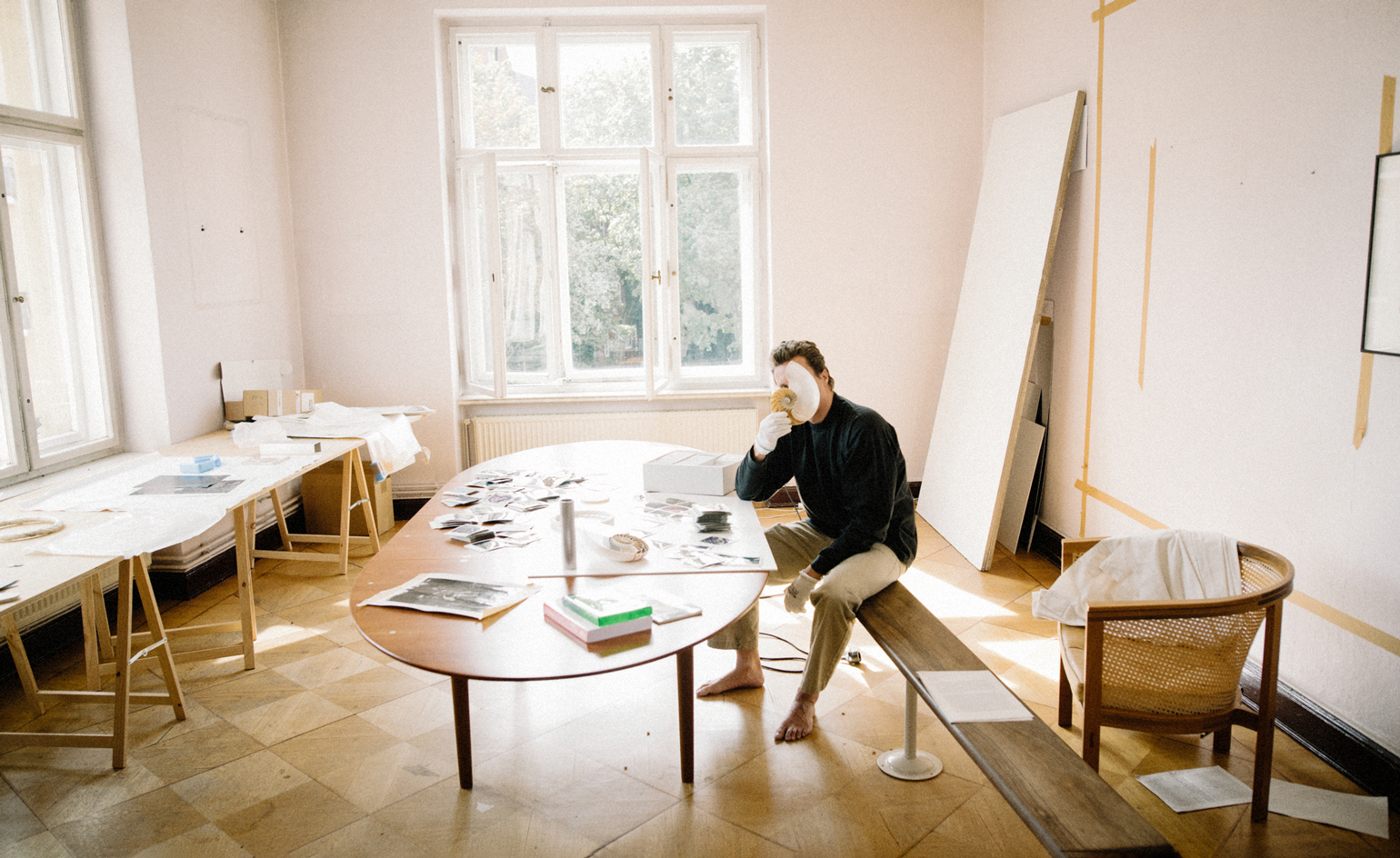 Cyprien Gaillard on chaos, reorder and excavating a Paris in flux
Cyprien Gaillard on chaos, reorder and excavating a Paris in fluxWe interviewed French artist Cyprien Gaillard ahead of his major two-part show, ‘Humpty \ Dumpty’ at Palais de Tokyo and Lafayette Anticipations (until 8 January 2023). Through abandoned clocks, love locks and asbestos, he dissects the human obsession with structural restoration
By Harriet Lloyd-Smith
-
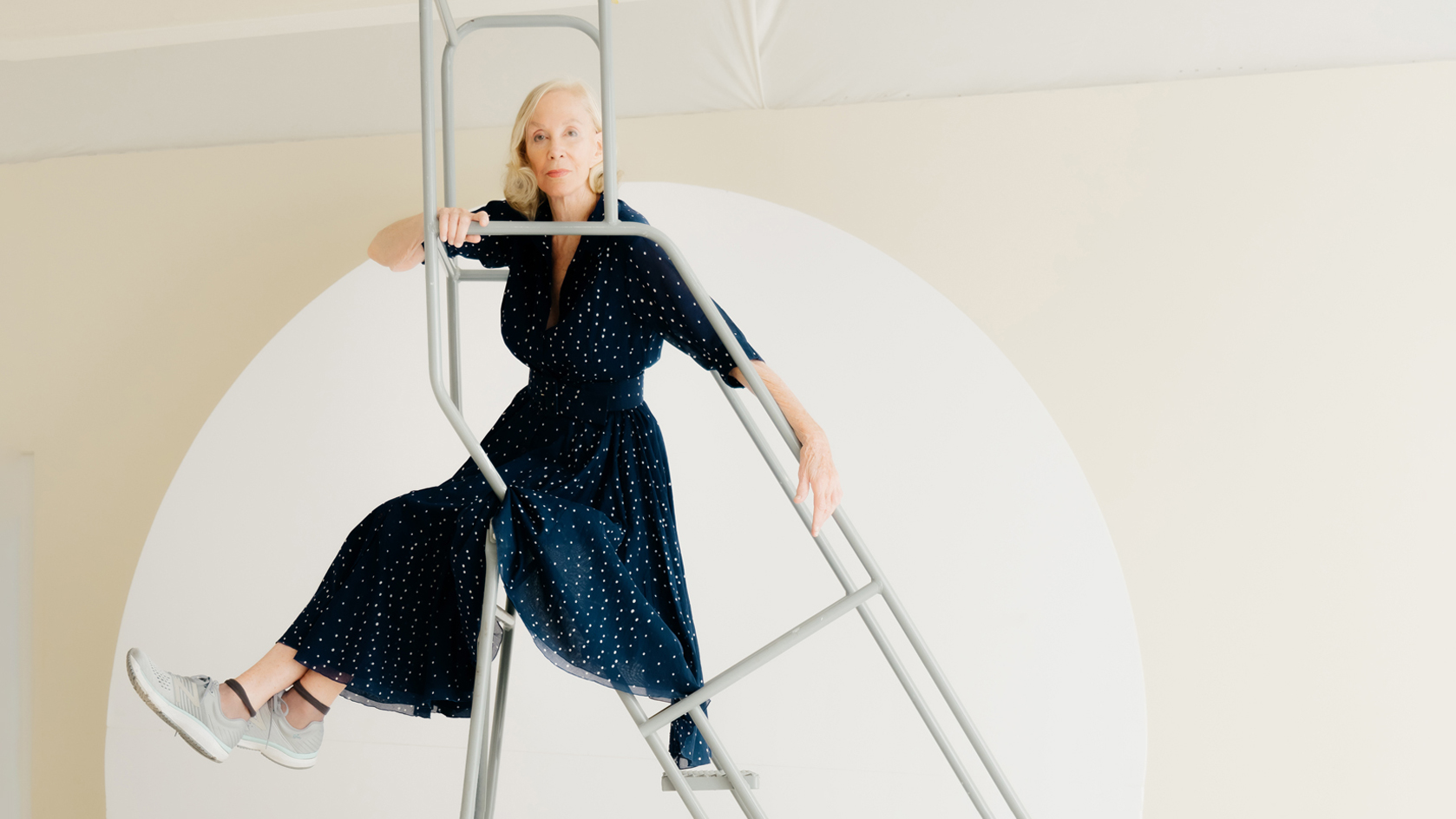 Year in review: top 10 art interviews of 2022, chosen by Wallpaper* arts editor Harriet Lloyd-Smith
Year in review: top 10 art interviews of 2022, chosen by Wallpaper* arts editor Harriet Lloyd-SmithTop 10 art interviews of 2022, as selected by Wallpaper* arts editor Harriet Lloyd-Smith, summing up another dramatic year in the art world
By Harriet Lloyd-Smith
-
 Yayoi Kusama on love, hope and the power of art
Yayoi Kusama on love, hope and the power of artThere’s still time to see Yayoi Kusama’s major retrospective at M+, Hong Kong (until 14 May). In our interview, the legendary Japanese artist vows to continue to ‘create art to leave the message of “love forever”’
By Megan C Hills
-
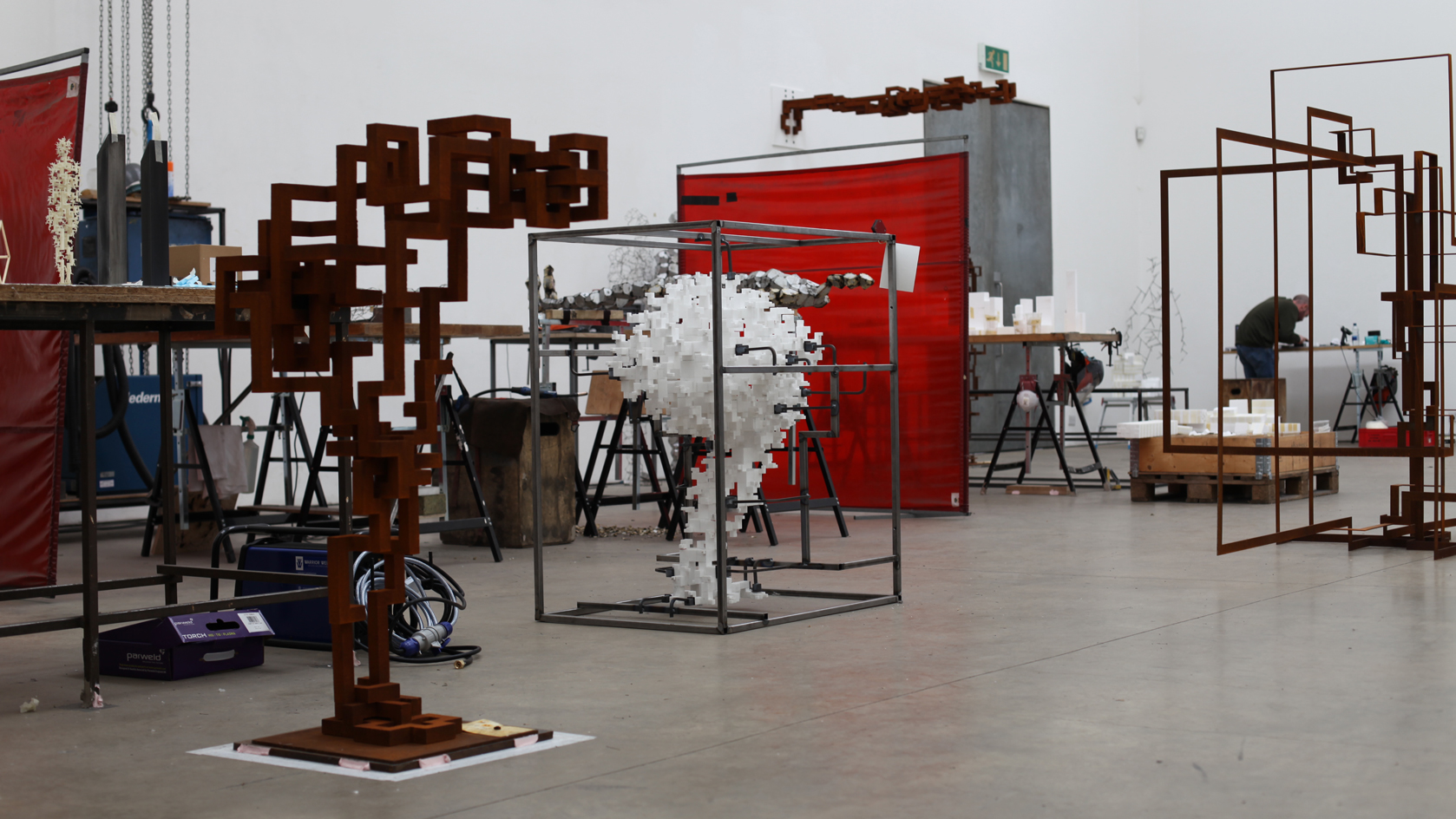 Antony Gormley interview: ‘We’re at more than a tipping point. We’re in a moment of utter crisis’
Antony Gormley interview: ‘We’re at more than a tipping point. We’re in a moment of utter crisis’We visit the London studio of British sculptor Antony Gormley ahead of his major new show ‘Body Field’ at Xavier Hufkens Brussels
By Harriet Lloyd-Smith
-
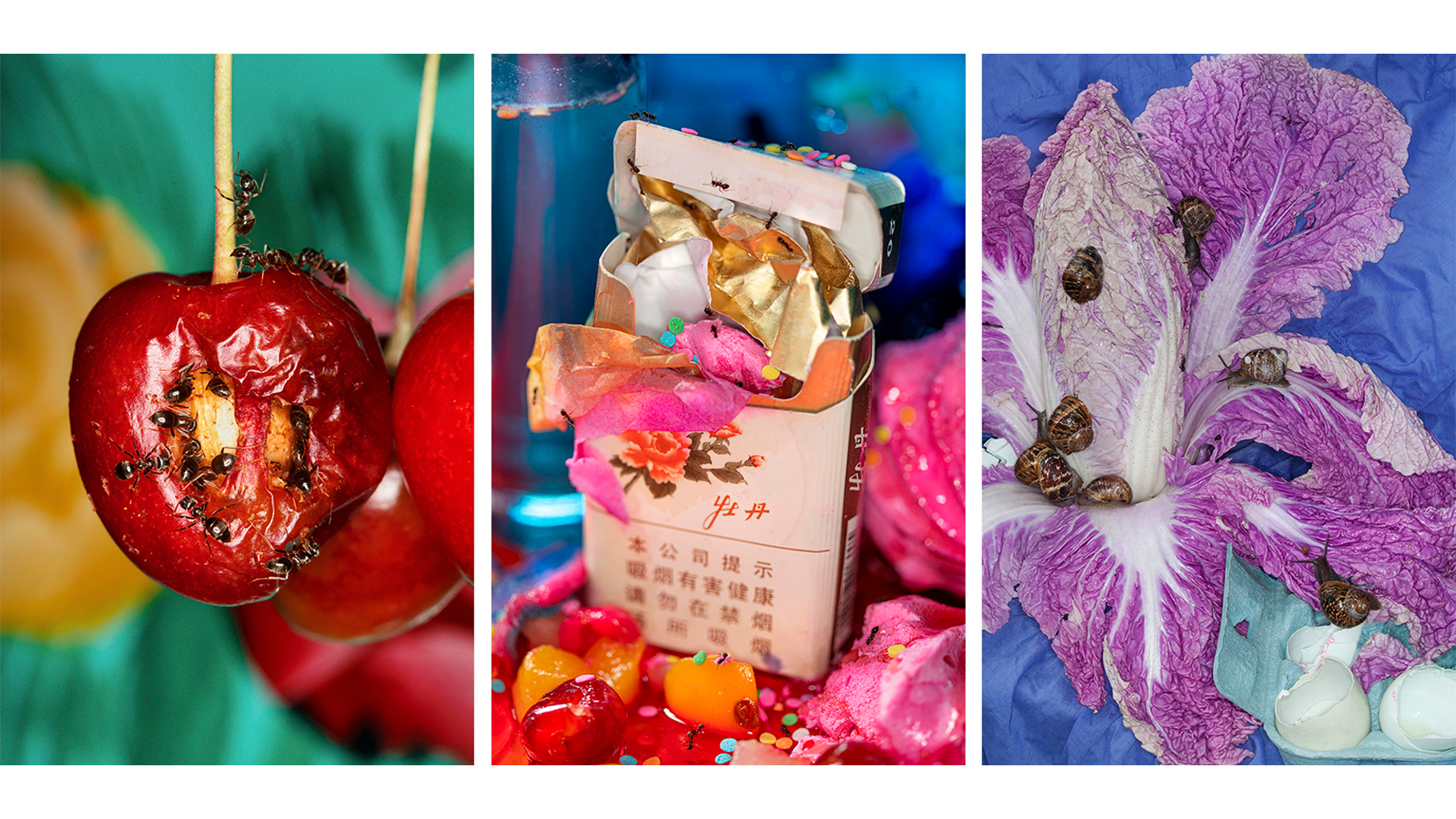 Photographer Maisie Cousins on nostalgia, impulsive making and ‘collecting useless things’
Photographer Maisie Cousins on nostalgia, impulsive making and ‘collecting useless things’Explore the vision of British artist Maisie Cousins in ‘Through the lens’, our monthly series spotlighting photographers who are Wallpaper* contributors
By Sophie Gladstone
-
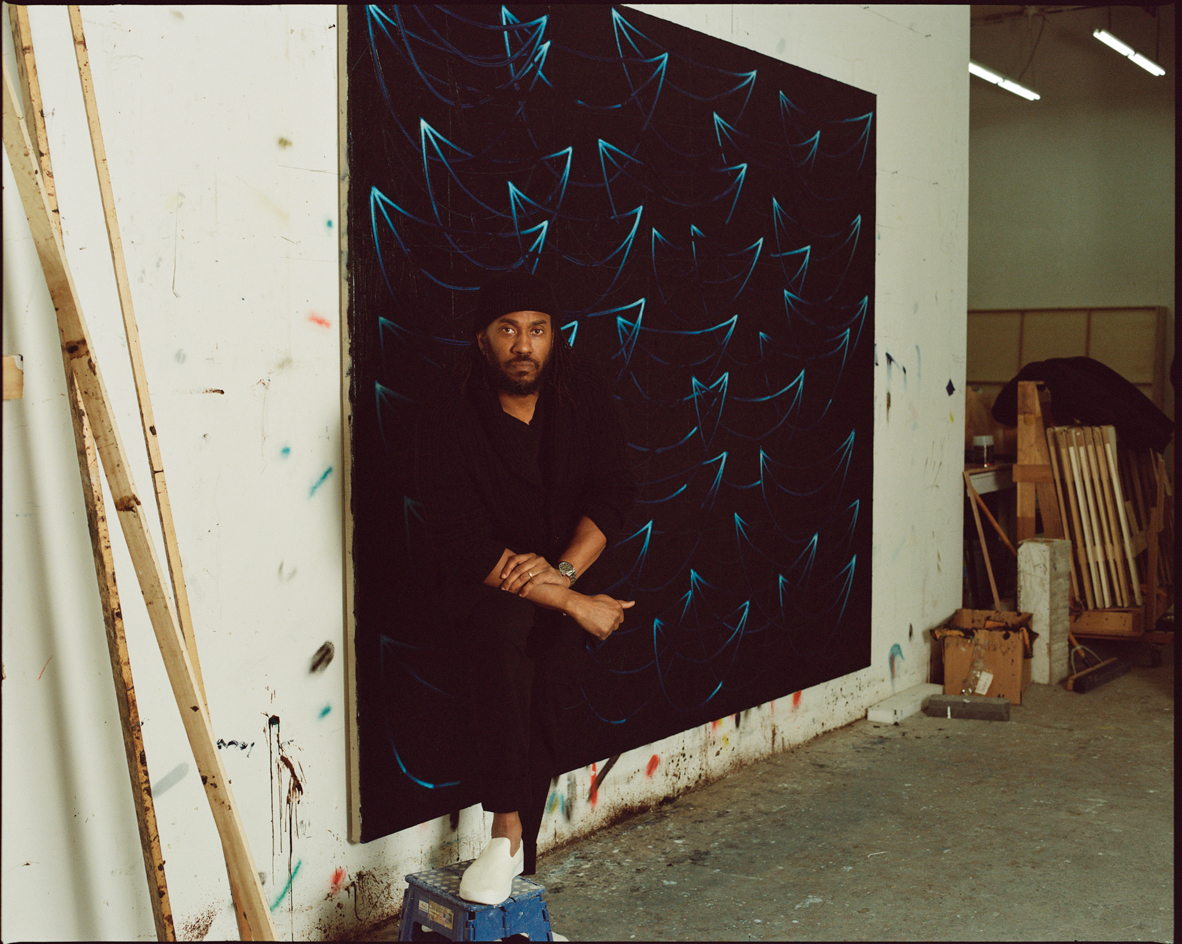 Rashid Johnson in Menorca: a journey through migration, longing and togetherness
Rashid Johnson in Menorca: a journey through migration, longing and togethernessWe visited Rashid Johnson’s Brooklyn studio ahead of the artist’s show at Hauser & Wirth Menorca, which contemplates drift – physical and emotional
By Osman Can Yerebakan
-
 Step inside the kaleidoscopic universe of Pipilotti Rist
Step inside the kaleidoscopic universe of Pipilotti RistSwiss artist Pipilotti Rist, who headlines Wallpaper’s November 2022 issue, has transformed the way we see, with a poetic yet playful practice spanning three decades. Here, and in a special portfolio, she reveals how she has liberated video art from its conventions, imbued the digital realm with emotion, animated public spaces, and harnessed the healing powers of colour
By Jessica Klingelfuss
-
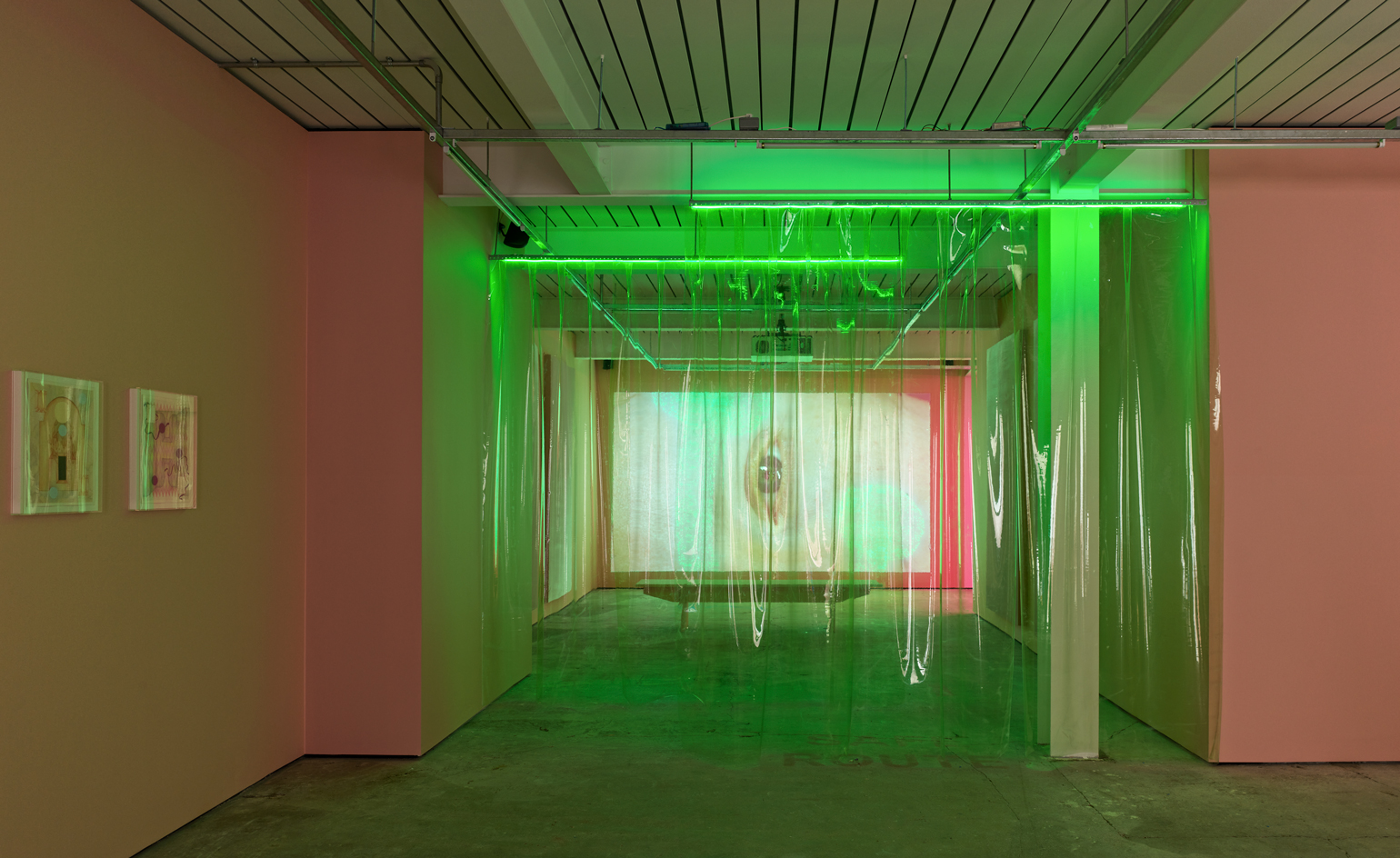 Gathering: the new Soho gallery blending art and social activism
Gathering: the new Soho gallery blending art and social activismGathering, the newest gallery resident in London’s Soho, will focus on contemporary art exploring systemic social issues. Ahead of Tai Shani’s inaugural show, we speak to founders Alex Flick and Trinidad Fombella about their vision for the gallery
By Harriet Lloyd-Smith